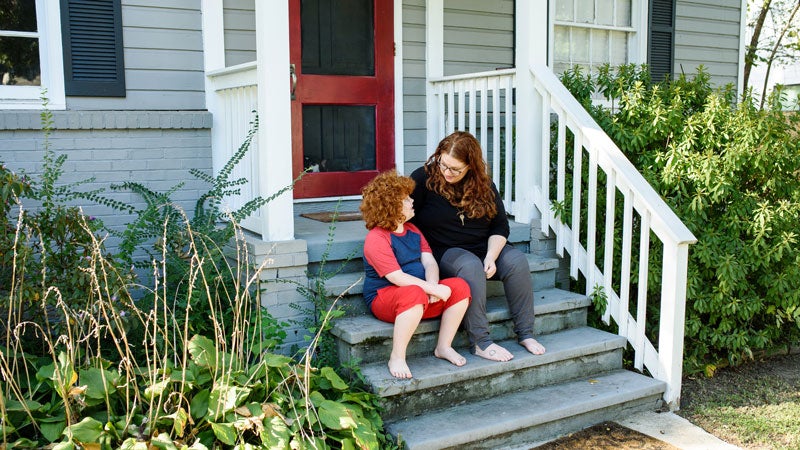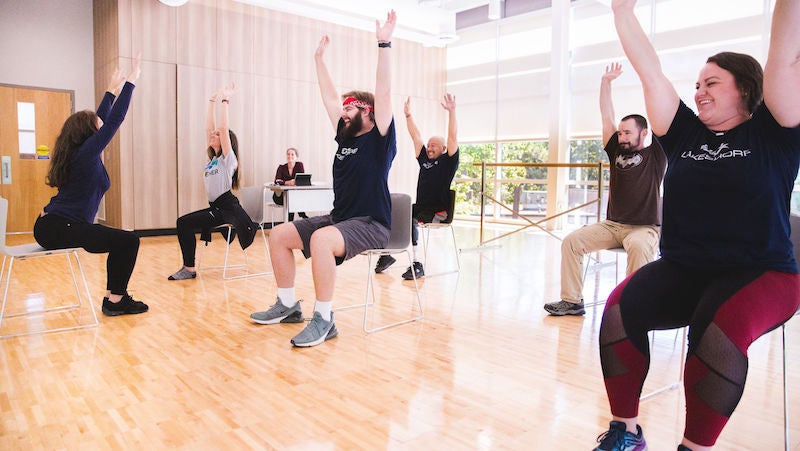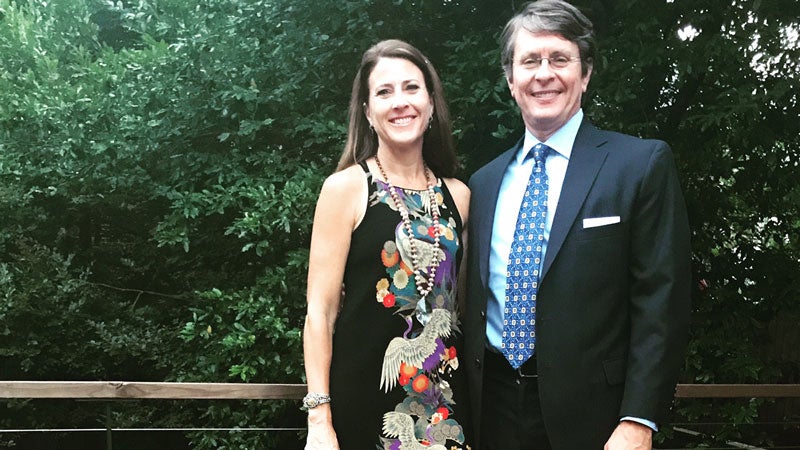By Mary Michael Kelley
It was April 13, 2011. I was 32 weeks pregnant with my second child, a baby girl to be named Kathryn. A few weeks earlier, I had contacted my OB’s office, concerned that I was larger than I should be at that point. I knew I wasn’t crazy, considering my oldest son Thomas was only 16 months old at the time, and I basically felt like I’d spent the last decade pregnant.
The nurse looked up my file and told me that I was measuring fine at the previous visit, she wasn’t concerned, and they would double check my measurements at the next appointment. A couple of weeks later, my OB pulled out the measuring tape to measure my belly—every centimeter equates to one week of pregnancy. So a full-term pregnant woman should measure about 40 centimeters across the midline of her belly.
I was 36 weeks at that time.
I measured 74 centimeters.
That was the moment my world changed.
Two weeks later, after transitions to specialists, a multitude of tests and STILL no answer as to what was causing my baby to be so sick, I was the size of someone carrying full-term quadruplets. I couldn’t walk up the stairs, couldn’t fit behind the steering wheel and couldn’t turn over by myself in bed. Torture only begins to describe it.
By that point, the doctors had sympathy for me, and they delivered.
She was beautiful. Born on Friday, May 13, Katy had a head full of brown hair and weighed over 9 pounds, but most was due to swelling and fluid buildup. She let out a tiny little squeak, and then was rushed off to be intubated.
Katy fought hard for 12 days before I held her at 1 a.m. on May 25th as she took her last breath. That was the first and last time I got to hold her. Her dad and I walked out of the hospital at 4 a.m. into the dark silence of early morning Birmingham without our daughter, and without a clue as to what killed her. It was the first worst moment of my life.
I never imagined that I would be the mom who belonged to this club. But just like that, there I was: the newest member. 
That summer was a blur. Eventually, family and friends went back to their routines, and I was left trying to find some semblance of new normalcy as a bereaved mom with an 18-month-old little boy who still needed his momma actively present. The adjustment was difficult, and I couldn’t shake the fears and “what ifs” of my new life. In August of that year, the call finally came through: the autopsy report was ready, a piece of information that was vital to know for purposes of future family planning.
The report revealed a suspected Congenital Chylothorax, which is a leak in the thoracic duct. Kathryn’s, it seemed, was severe enough that it ruptured some point after birth, causing severe fluid accumulation throughout her body. The good news, they said, was that this was a structural birth defect “unlikely to recur.”
“Like being struck by lightning twice,” they said—those were the odds of recurrence. 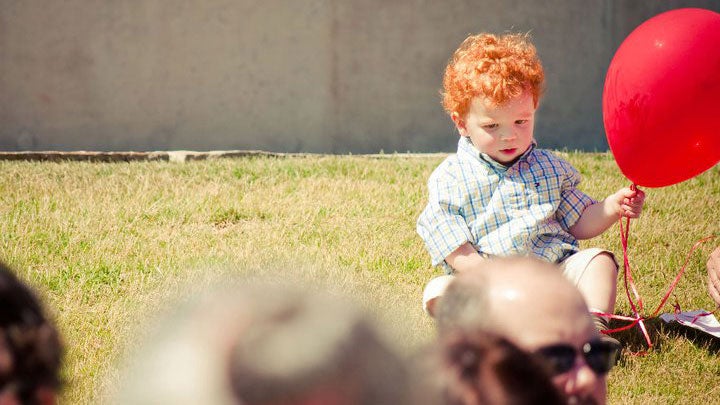
The following year, three days after what would have been Katy’s first birthday, I took a pregnancy test. It was positive.
The anxiety you feel upon finding out this news after losing a child is suffocating, and it kicked in immediately. I reminded myself there HAD to be goodness in this. This world had plans I could not comprehend, I told myself, and my job as that little one’s mother was to trust those plans, let go of fear and embrace the time, whatever time, I had with that little bean growing inside of me.
Obviously, every appointment was full with dread. I went into ultrasounds knowing that I could relive my worst nightmare at any point. I started to relax a little by my 12-week appointment, when the ultrasound still showed a healthy baby, and a baby boy, at that. At that appointment, my doctor looked me in the eye and said, “RELAX – all I want for you to worry about from this point forward is what you’re going to name this baby boy.”
His name was Micah, after my favorite Bible verse, Micah 6:8.
I had six weeks of bliss, with Micah supposedly healthy in my womb. I felt good physically as friends and family learned of our upcoming arrival. The day I went in for my 18-week appointment. I went by myself, as I was so sure that things were going well. During the ultrasound, the tech got very quiet. If you’ve been through it, you know what I’m describing. She went to get the doctor, who came in, looked at the screen, and then said, “I have a few concerns.”
Once again, life was a blur. Micah had fluid build-up in his lungs and severe edema—diagnosed as fetal hydrops—the same complication as Kathryn. Fetal hydrops is a complication with hundreds of causes, but since this had now occurred twice, we knew we were likely dealing with a rare genetic disorder.
I walked out of the appointment that day alone, but surprisingly, not in shock. Instead, I was angry. And I made the decision at that point to channel my anger into action—determined to do everything to find a way to save Micah. One week later, we were back in the office to have an intra-uterine procedure to place shunts into Micah’s chest cavity to drain the fluid off his lungs. Ultimately, we had to do that procedure three times because Micah kept pulling out the shunts, which my doctor told me was a good thing. It showed he had spunk and was a fighter.
He couldn’t have been righter.
Micah was born Thanksgiving night, 2012, at 28 weeks, after I suffered a placental abruption. He was the sickest baby I’d ever seen. Micah was taken immediately to the Neonatal Intensive Care Unit (NICU), but this time, his team knew not to sugarcoat things with us. Having been through this before, transparency and honesty, no matter how difficult to hear, was the most important piece. If they didn’t think Micah was going to pull through, they knew not to provide any false hope.
His doctors told us within a few hours that they didn’t expect Micah to pull through the next 24 hours, that he was simply too sick. My ears rang upon the news. Darkness came across my eyes, and all I could hear was the muttering of family, my best friend by my side, and the beeping of the machines. Once my vision cleared and the shock settled, the plans began.
Grandparents arrived, as did aunts and uncles, and they brought Thomas to the hospital to meet his little brother, whom he had been so excited, albeit reserved, to meet. Our dear friend, a photographer, drove back from Georgia to take pictures of us with him. My mother brought the beautiful nightgown she had monogrammed for him. Most get these clothes for going home, yet I had her get for his pictures upon his passing. We were ready. As ready as you can be.
But Micah just kept fighting. And boy did he fight. 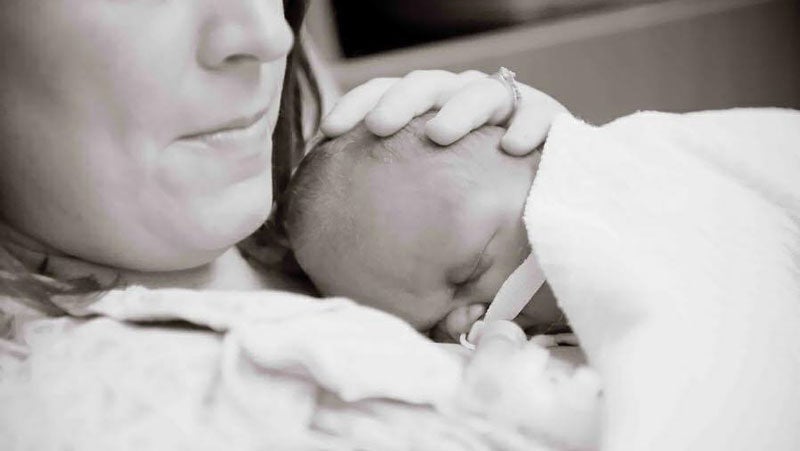
On Christmas day, a little over a month after he was born, I held him for the first time. Then, about two months after that, he took to the breast and drank, like a real human baby. I was in awe every day of the true miracle I was witnessing.
Micah spent NINE months in the NICU. When he came home in July of 2013, he had a g-tube for tube feedings since he was so slow taking a bottle, was on full-time oxygen support, and was on 14 medications. We trained for months to transition our home into one for a child with special needs. Even still, it was an adjustment, especially for Thomas. Considering it all, it was thrilling. Thomas even allowed himself to grow close to his brother, especially once he saw him at home, and that closeness continued to grow.
Over the next few years, after enrolling in the UAB Genetics Undiagnosed Diseases Program, Whole Exome Sequencing revealed that Micah and Kathryn had inherited two mutated copies of a dominant blood disorder, making them compound heterozygous for a dominant disorder. This discovery, however, also helped identify a brand new recessive hereditary Lymphatic Dysplasia.
When Micah was 14 months old, he had his first of what we referred to as an “episode,” where he would spike a very high fever, break out in a rash on his legs, complete with systemic, body-wide inflammation and an incredible amount of pain. 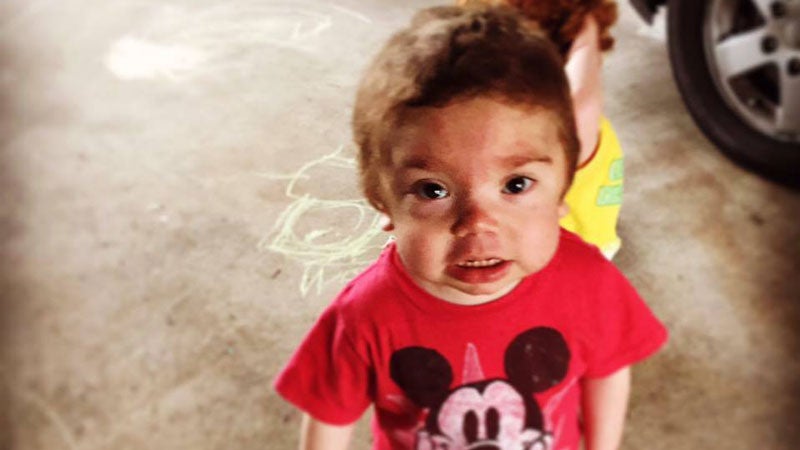
Six months after that, Micah was diagnosed with Systemic Juvenile Idiopathic Arthritis (SJIA). Also known as Still’s Disease, we learned it’s an auto-inflammatory disease and is the most severe form of juvenile arthritis. These flare-ups continued about every four to six weeks and continued to worsen with severity.
Still, Micah thrived. He was off all oxygen, was eating more by mouth, and even started walking at two and a half years old. What a joyful day that was! Micah began preschool in addition to his classes at The Bell Center, and he was LOVING the social interaction. The child was, quite literally, A HOT MESS, and I loved every single second of it.
Fast forward to Mother’s Day 2016. I was out of town that weekend with my own mom in Mobile. When I arrived home that evening, Micah wasn’t feeling well and had a temperature of 106 degrees. We immediately took him to the emergency room, where he was admitted into the special care unit. By midnight that night, he had been transferred to the Pediatric Intensive Care Unit and was intubated on full support.
His last new word that Friday after school had been “yellow.” We were standing in the kitchen , and I pulled out a little chick he’d made in school and told him how proud I was of him. He walked over to me, pointed to it, smiled and said, “yewowe.” I’ve never been prouder of him. What an amazing kid.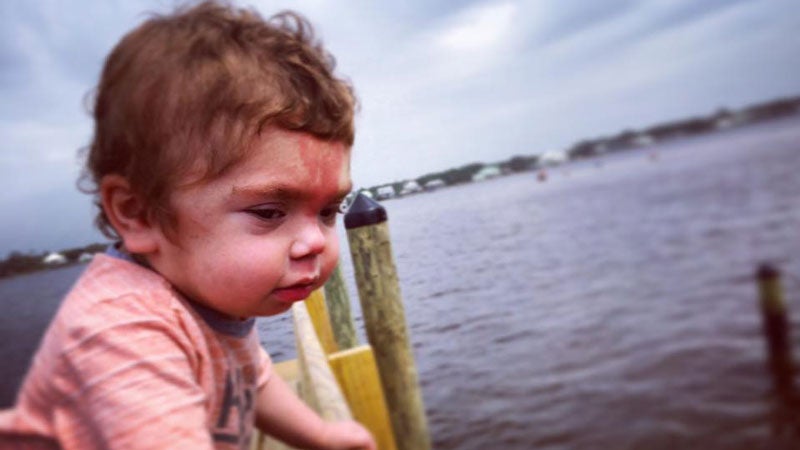
What happened from Sunday to Tuesday happened incredibly quickly. There was talk of infection, talk of complications of his Still’s Disease, confusion, and for me, sheer despair. At one point, I walked into the bathroom, shut the door, and screamed my tears, moaned and punched the walls in anger and exasperation. I called my best friend in Baltimore, Cheryl, and told her I needed her, that it may be time. I had the same phone call with my parents. By Monday afternoon, doctors were running out of options, and by this point, it was confirmed that Micah had caught an infection that triggered the most severe complication of his Still’s Disease called Macrophage Activation Syndrome, and it had attacked almost every major organ in his little body.
On Monday night, those of us closest to Micah took turns holding him throughout the night. On Tuesday morning, I walked outside for some fresh air before the sun came up, with that dark, still Birmingham morning all around me, I looked up to the heavens, and I let him go.
Micah passed away in my arms, surrounded by all our family and closest friends after the sun came up, because I was determined to never walk out of a hospital after my child died in the middle of the night again. But I’ll tell you something—it was dark and still no matter how sunny it was that morning.
I’ve spent the past three years working through this complicated grief of being the mother of two children who’ve passed away, and during this time, I’ve learned a great deal over what it does to you physiologically and how it affects your relationships with family and friends.
For those of us grieving, there are times each year that are the hardest—like birthdays, death anniversaries and the holidays. But there are also other touchstones, like the first day of school, when you think about how old your child would be, what grade they’d be in, and you see all those first day of school pictures on Instagram. Those moments can be just as tough. 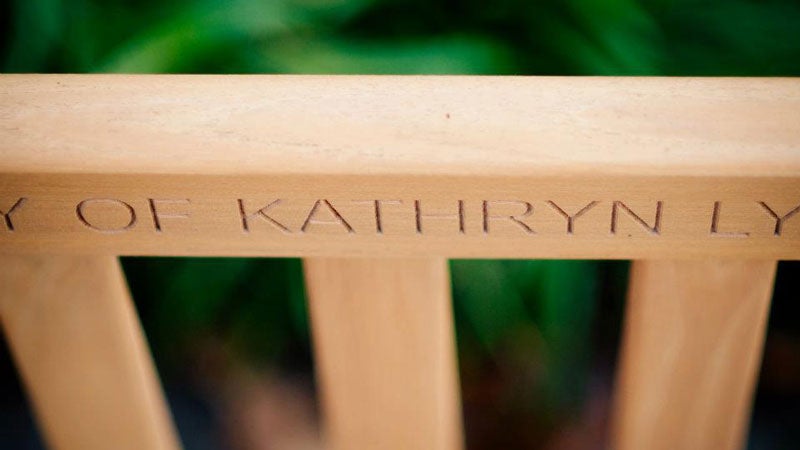
If you’re a friend of someone whose life has been forever altered through the PTSD of child loss, you likely know that your relationship with them has changed as well. They may seem more isolated, more reserved and sometimes even disinterested. Please know this is not personal. This is a survival technique for them. Sometimes, putting yourself out there with friends is simply too hard to see the lives that you either had or wanted so much, and yet for whatever reason, you lost your child, and they didn’t. It’s not a jealousy or bitterness—it’s a deep sadness. And often that sadness takes time and internal processing to work through. Other times, they need nothing more than to hear from you, even if it’s just to send a text that says, “Hi, Love you.” Sometimes that’s all it takes to brighten a day.
Micah and Kathryn are with me every day. After LOTS of therapy, trauma counseling and group work, I know that the best thing I can do to honor their lives is to live mine FULLY. This isn’t the life I ever thought I’d lead.
But it’s mine.
For many of your friends and neighbors, it’s theirs as well. Don’t be afraid to speak their names. Don’t shy away from asking them the hard questions.
They LIVE the hard questions.
And they just may be living right next door.
What Grieving Parents Wish You Knew
I asked some friends of mine, all moms who have lost children, if they’d share with me some things that they wish their friends knew about what to do and what NOT to do immediately after loss, and even as time goes by. Here are a few of their responses.
“Please don’t say she is in a better place. Hugs are good.”
“People usually say, ‘This is a silly question, but how are you?’ I don’t mind that question. I know they mean well.”
“Let me cry and listen to me remember my girl. Remember her with me, even better!”
“I’ve had friends tell me that they will sit with me in my grief. And I think that’s a really sweet thing to say.”
“I think some people are afraid to mention my child for fear it will upset me, and the opposite is true. I always appreciate it when people remember him!”
“Right after our loss, someone said to me, ‘Well, at least you have two other healthy children.’ That was very upsetting to hear. I know she meant well but it was not received well.”
“If I haven’t called in a while, it’s because I’m just so mentally exhausted from living this normal life, when I feel anything but normal inside. But I LOVE when you call me. It lets me know you love me and are thinking of me and don’t think I’m a total bummer to be around, which honestly helps me more than you can ever know.”
“SAY THEIR NAMES.”
“It always helps me when people comment on my memories of my child on social media—it makes me feel like he’s not forgotten.”

